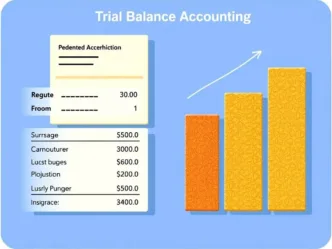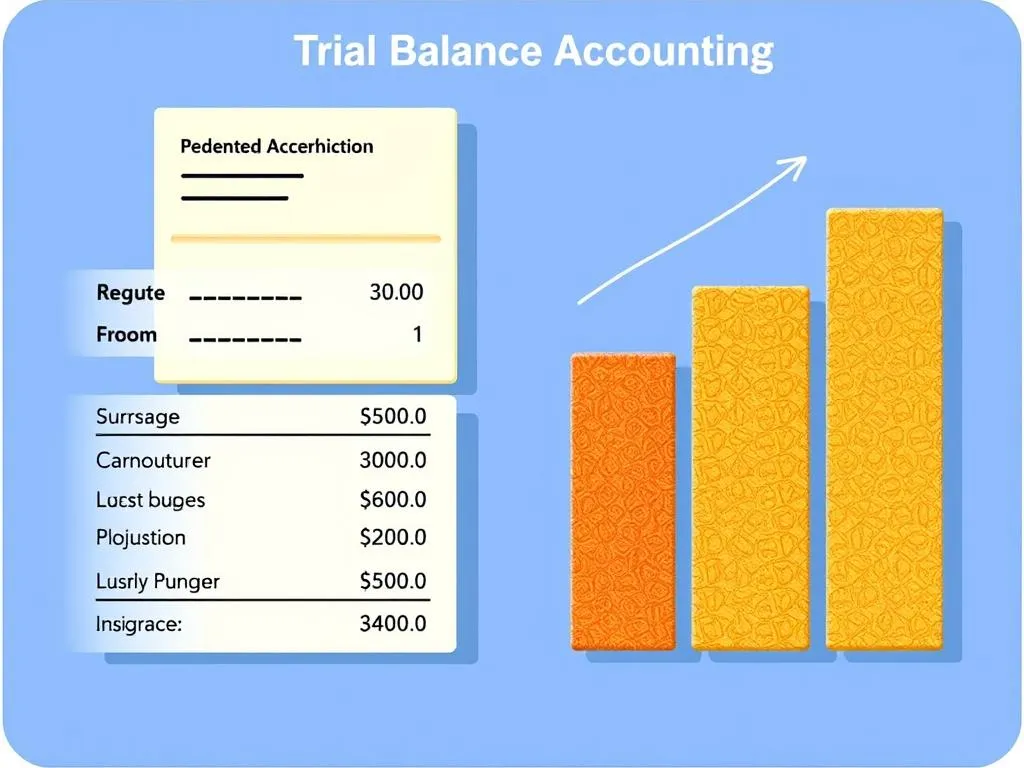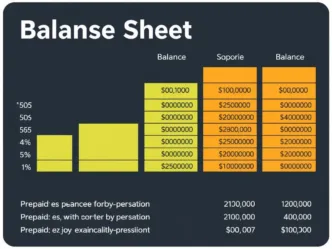Learn the essentials of trial balance accounting with a practical example. Understand how to balance accounts and ensure accurate financial reporting.
Trial Balance Accounting with Simple Example: The Unsung Hero of Your Accounting Journey
You’re a baker preparing a grand wedding cake. Before assembling layers, you double-check every ingredient—flour, sugar, eggs—to ensure nothing’s missing or duplicated. A trial balance does the same for your business finances. It’s the preliminary taste test before serving up financial statements. Let’s break down this unassuming yet critical tool through the eyes of a small business owner.
1. What Is a Trial Balance? (No Jargon, Promise)
A trial balance is a master checklist of every account in your ledger. It lists all debits and credits to confirm they balance—like verifying your cake layers stack neatly before frosting.
- Debits vs. Credits: Every transaction has two sides. If you spent $500 on ingredients (debit: Supplies), your cash decreased by $500 (credit: Cash).
- The Golden Rule: Total debits must equal total credits. If not, there’s a typo, missed entry, or misclassified transaction.
2. Why It Matters: Beyond Arithmetic
- Error Detective: Catches mistakes before they poison your financial statements.
- Financial Blueprint: Guides the creation of income statements and balance sheets.
- Investor Confidence: A clean trial balance signals organized books—critical for loans or partnerships.
3. A Real-World Example: The Coffee Shop Chronicles
Meet Mia, who runs “Bean & Brew.” Here’s her simplified ledger for January:
| Account | Debit ($) | Credit ($) |
|---|---|---|
| Cash | 5,000 | |
| Accounts Receivable | 1,200 | |
| Equipment | 8,000 | |
| Inventory (Coffee) | 2,500 | |
| Accounts Payable | 3,000 | |
| Sales Revenue | 12,000 | |
| Rent Expense | 1,800 | |
| Totals | 18,500 | 15,000 |
Uh-oh: Debits ($18,500) ≠ Credits ($15,000). Mia’s trial balance is unbalanced.
4. Troubleshooting the Imbalance
Mia retraces her steps:
- Missing Entry: She forgot to record a $3,500 loan received (Credit: Loan Payable).
- Corrected Trial Balance:
| Account | Debit ($) | Credit ($) |
|---|---|---|
| Cash | 8,500 | |
| Accounts Receivable | 1,200 | |
| Equipment | 8,000 | |
| Inventory (Coffee) | 2,500 | |
| Accounts Payable | 3,000 | |
| Sales Revenue | 12,000 | |
| Rent Expense | 1,800 | |
| Loan Payable | 3,500 | |
| Totals | 21,000 | 21,000 |
Success! Now debits = credits. Mia can confidently draft her financial reports.
5. Common Mistakes (And How to Fix Them)
- Transposition Errors: Writing $530 as $350. Fix: Scan entries for swapped numbers.
- Omitted Transactions: Forgetting to log a sale or payment. Fix: Reconcile with bank statements.
- Wrong Account: Recording equipment repair as “Office Supplies.” Fix: Review chart of accounts.
6. Trial Balance vs. Balance Sheet: Don’t Mix Them Up!
- Trial Balance: A raw, unpolished list of all accounts (even temporary ones like revenue/expenses).
- Balance Sheet: A refined snapshot of assets, liabilities, and equity at a specific date.
Analogy: The trial balance is your rough dough; the balance sheet is the golden-brown croissant.
7. When the Trial Balance Lies
A balanced trial balance doesn’t guarantee error-free books. For example:
- Compensating Errors: Overstating rent by $500 and understating supplies by $500.
- Misclassifications: Debiting “Loans” instead of “Equipment.”
Moral: Use the trial balance as a first step—not the final verdict.
8. Modern Tools: From Ledgers to Apps
Gone are the days of manual T-accounts. Tools like QuickBooks, Xero, and FreshBooks auto-generate trial balances, flagging imbalances instantly.
9. A Small Business Owner’s Cheat Sheet
- Run It Monthly: Catch errors while transactions are fresh.
- Cross-Check Totals: If unbalanced, compare debits/credits column-by-column.
- Keep It Simple: Use color-coding (red for debits, green for credits) for visual clarity.
Conclusion: The Trial Balance as Your Financial Compass
The trial balance isn’t glamorous, but it’s the unsung hero that keeps your financial story coherent. For the freelancer juggling gigs, the café owner brewing lattes, or the startup founder scaling up, it’s the reality check that ensures your numbers add up—literally.
Pro Tip: Print your trial balance and review it over coffee. Sometimes, old-school paper reveals what screens hide.







